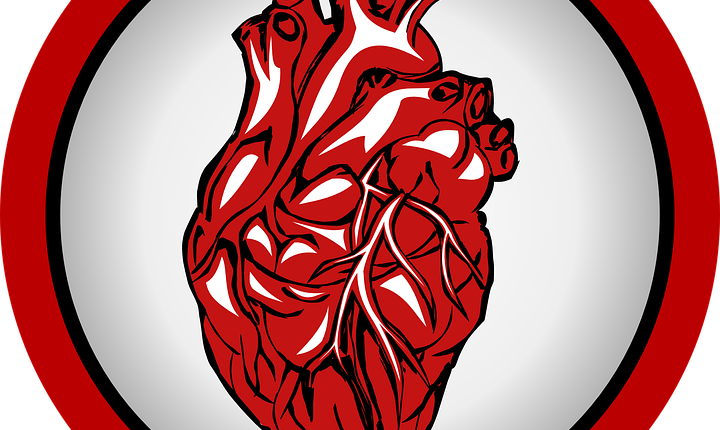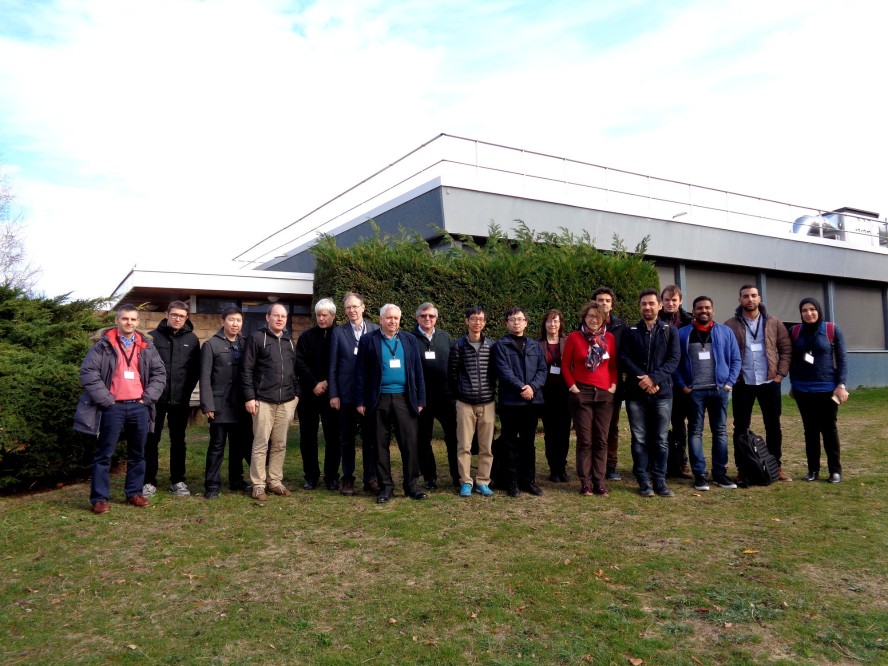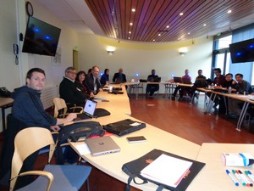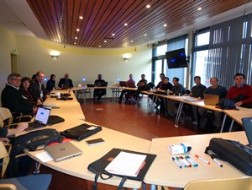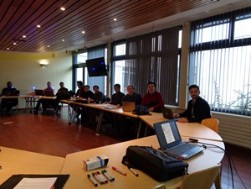International workshop Mathematical Modeling in Hemodynamics
Du 19 novembre 2018 au 20 novembre 2018
Faculté des Sciences et Techniques
Campus Métare
Salle du conseil
Organised by MODMAD, ENSMSE and ICJ.
The workshop is devoted to an important trend in biomathematics, mathematical modeling in hemodynamics.
This workshop continues the series of conferences on multiscale methods and applications in engineering and biology. Such methods combine microscopic and macroscopic descriptions of the phenomena and are usually based on asymptotic and numerical analysis of the microscopic model equations. The application of these methods allows creating new more adequate and more precise models in biology and medicine.
The workshop will bring together the well-known specialists in the topic and young researchers and students. The theoretical results will be presented together with the numerical and computer experiments.
Poster of the workshop
Organizers:
S. Avril, Mines Saint-Etienne, France
G. Panasenko, University Jean Monnet, Université de Lyon, France
Speakers :
Miquel Aguirre, Mines Saint-Étienne, France,
Stéphane Avril, Mines Saint-Étienne,France,
Cristobal Bertoglio, Bernouilli Institute, Groningen, Netherlands,
Antonio Gil, Swansea University, UK,
Aleksandr Grigoriev, North-Eastern Federal University, Yakutsk, Russia,
Yiqian He, Dilian University, China,
Marie-Hélène Lafage Proust, University Jean Monnet, France,
Grigory Panasenko, University Jean Monnet, France,
Konstantin Pileckas, Vilnius University, Lithuania,
Olga Stikoniene, Vilnius University, Lithuania,
Yury Vassilevskii, Institute of Numerical Mathematics of Russian Academy of Sciences, Moscow, Russia..
Program
Preliminary Program
|
November 19, 2018 | |
|---|---|
|
9:00-9:15 |
Opening |
|
9:15-9:45 |
Yury Vassilevskii, Institute of Numerical Mathematics of Russian Academy of Sciences, Moscow, Russia Numerical modelling of incompressible flows in time-dependent domains and hemodynamic applications |
|
9:50-10:20 |
Cristóbal Bertoglio, Johann Bernoulli Institute, University of Groningen, The Netherlands Inverse problems in hemodynamics from MRI |
|
10:25-10:45 |
Coffee break |
|
10:45-11:15 |
Antonio Gil, Swansea University, UK, An enhanced Immersed Structural Potential Method for the simulation of fluid-structure interaction problems |
|
11:20-11:50 |
Stéphane Avril, Mines Saint-Etienne, France Correlation between wall shear stress and wall rupture properties in ascending thoracic aortic aneurysms |
|
12:00-13:30 |
Lunch |
|
November 20, 2018 | |
|---|---|
|
10:10-10:40 |
Konstantinas Pileckas, Vilnius University, Lithuania Stationary Navier-Stokes problem in 2D exterior domain |
|
10:45-11:15 |
Olga Stikoniene, Vilnius University, Lithuania Frédéric Chardard, University Jean Monnet/University of Lyon, Saint-Etienne, France Modeling of flows in a network of thin tubes |
|
11:20-11:50 |
Aleksandr Grigoriev, North-Eastern Federal University Two-level approach for modeling blood flow in liver / liver lobule |
|
12:00-14:00 |
Lunch |
|
14:00-14:30 |
Marie-Hélène Lafage Proust, University Jean Monnet/University of Lyon, Saint-Etienne, France TBA |
|
14:35-15:05 |
Yiqian He, Dilian University, China, A gradient-enhanced continuum damage model for healing in soft tissue with growth and remodeling. |
|
15:10-15:40 |
Miguel Aguirre, Mines Saint-Etienne, France Implementation of an ALE - Coupled Momentum Method for the simulation of patient-specific nonlinear FSI phenomena in CRIMSON. |
|
15:45-16:05 |
Coffee break |
|
16:05-16:35 |
Grigory Panasenko, University Jean Monnet/University of Lyon, Saint-Etienne, France Coupling of models for viscous flows of different dimension. |
|
16:40-17:00 |
Closing of the workshop discussions |
Abstracts
Miquel Aguirre: Implementation of an ALE - Coupled Momentum Method for the simulation of patient-specific nonlinear FSI phenomena in CRIMSON
Stéphane Avril: Correlation between wall shear stress and wall rupture properties in ascending thoracic aortic aneurysms
Cristobal Bertoglio: Stable open boundary conditions in fluid dynamics
Antonio Gil: An enhanced Immersed Structural Potential Method for the simulation of fluid-structure interaction problems
Aleksandr Grigoriev: Two-level approach for modeling blood flow in liver / liver lobule
Yiqian He: A gradient-enhanced continuum damage model for healing in soft tissue with growth and remodeling
Marie-Hélène Lafage Proust: Bone vascularization: its role in the bone-organ
Grigory Panasenko: Coupling of models for viscous flows of different dimension
Konstantin Pileckas: Stationary Navier-Stokes problem in 2D exterior domain
Olga Stikoniene: Modeling of flows in a network of thin tubes
Yury Vassilevskii: Numerical modelling of incompressible flows in time-dependent domains and hemodynamic applications
Inscriptions
For your inscription, click HERE
(before the deadline : Friday, November 9th, 2018)
REGISTRATIONS ARE NOW CLOSED
Photos of the workshop
|
|
|
|
Prof. Grigory PANASENKO
Grigory.Panasenko @ univ-st-etienne.fr
Localisation

